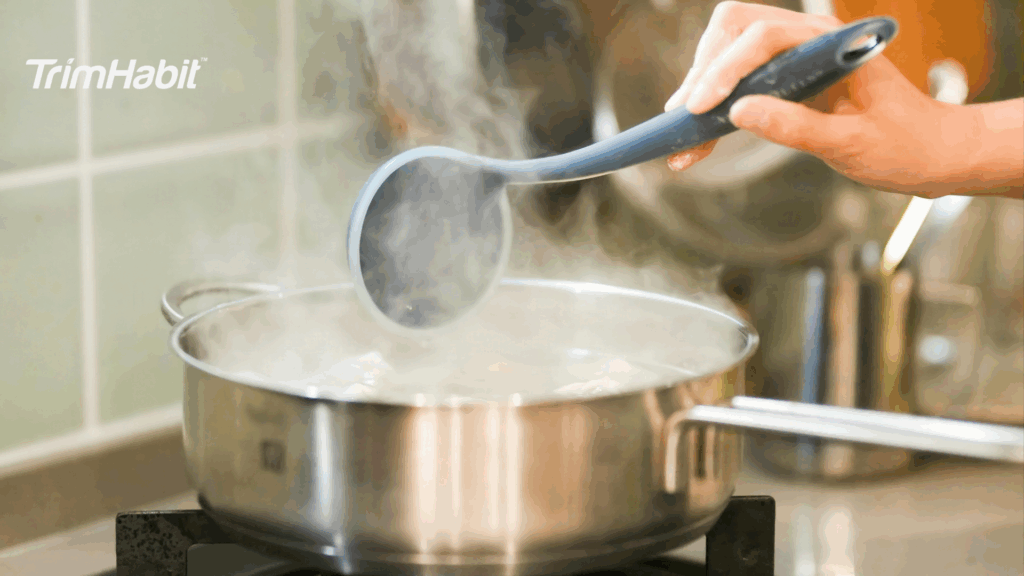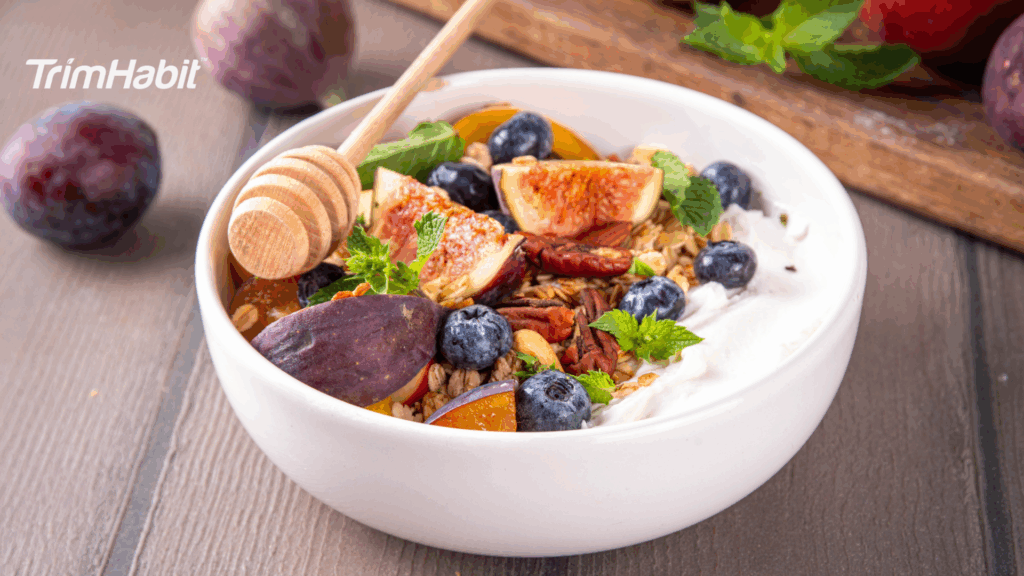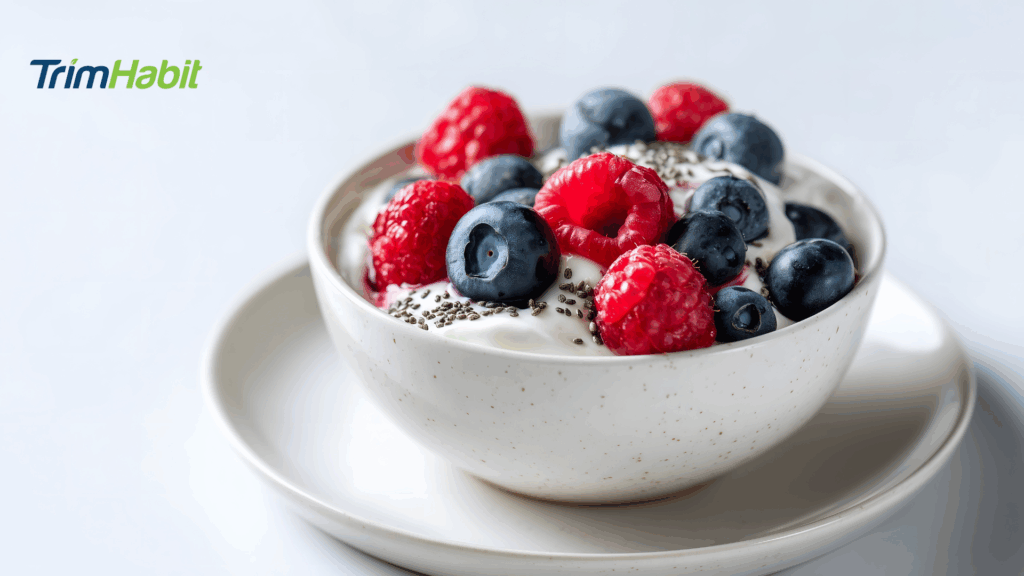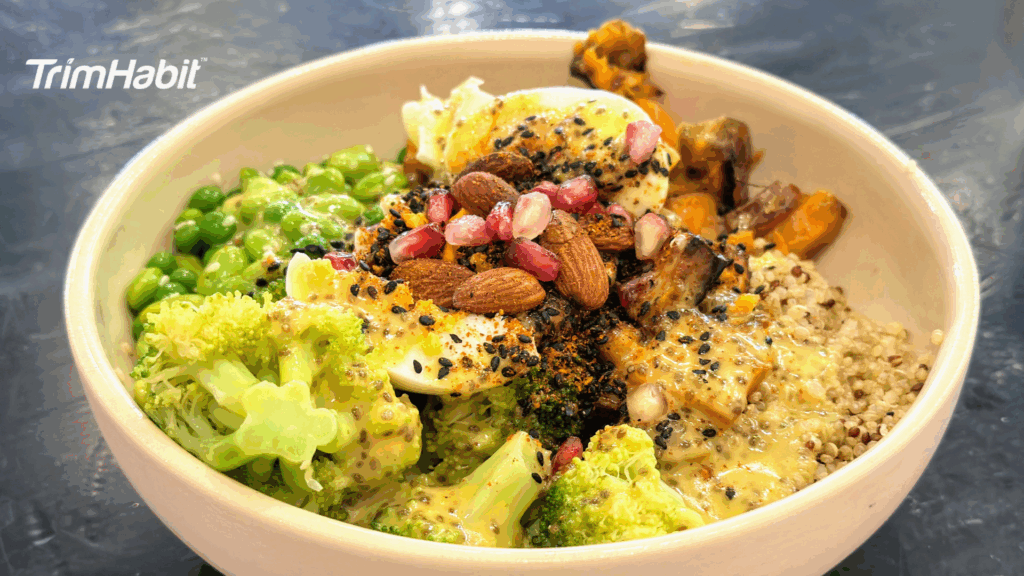Starting semaglutide, which is commonly used for weight management and blood sugar control, can significantly improve your health. However, one of the most important yet often overlooked aspects of success on semaglutide is how you eat. Because the medication reduces appetite and affects digestion, your diet must be strategic: nourishing, satisfying, and easy on your stomach. That’s where this guide comes in.
This article provides a one-week grocery list for eating on semaglutide. It’s meant to make shopping easier, especially when your appetite, energy, or digestion feels different than usual. The foods included are practical, flexible, and supportive of how your body responds to semaglutide. With the right ingredients on hand, planning meals and snacks can feel a lot more manageable.
Semaglutide Overview
Semaglutide is a medication originally developed to help manage type 2 diabetes, but is now widely used for weight loss as well. It belongs to a class of drugs called GLP-1 receptor agonists (glucagon-like peptide-1), which mimic a natural hormone in the body that helps regulate blood sugar and appetite1.
How It Works
Semaglutide works by:
- Increasing insulin production when blood sugar is high
- Suppressing glucagon (a hormone that raises blood sugar)
- Slowing stomach emptying, helping you feel full longer
- Reducing appetite and cravings, leading to lower calorie intake
Who Should Use It
Semaglutide may be prescribed for:
- Adults with type 2 diabetes
- Individuals with obesity (BMI ≥30) or overweight (BMI ≥27) with related health risks like high blood pressure, cholesterol, or sleep apnea
It is not recommended for:
- People with a personal or family history of medullary thyroid carcinoma
- Those with pancreatitis
- Pregnant or breastfeeding individuals
What To Consider When Grocery Shopping On Semaglutide
Grocery shopping while taking semaglutide means choosing foods that support your shifting appetite, help manage side effects, and keep your progress steady. Whether you’re using it for weight, blood sugar, or both, what you bring home can make a real difference. To get the best results, prioritize nutrient-dense foods and manage reduced calorie intake to meet your nutritional needs. Eating fewer calories and avoiding foods high in fat and calories can help support weight loss and minimize side effects2.
Focus on Protein-Rich Foods
Semaglutide reduces appetite, so it’s essential to make every bite count, especially with high-protein foods, which preserve muscle and keep you fuller longer.
- Good options: Lean protein sources like chicken breast, turkey, and fish, as well as tofu, Greek yogurt, eggs, cottage cheese, beans, and lentils
Choose High-Fiber Carbs
Fiber helps with digestion and can ease constipation, a common side effect. Plus, it keeps blood sugar levels more stable.
- Good options: Oats, quinoa, brown rice, whole grain bread, chia seeds, berries, leafy greens, broccoli
Stock Up on Healthy Fats
Fats help you feel satisfied and play a key role in hormone health, especially unsaturated fats, which are known for supporting heart health. Just be mindful of portion sizes.
- Good options: Avocados, olive oil, nuts, seeds, fatty fish like salmon
Hydration Is Key
Semaglutide can cause nausea and reduce thirst cues, making hydration more critical. It’s best to limit carbonated beverages to avoid gastrointestinal discomfort. Staying hydrated offers many health benefits, such as improved digestion and increased energy.
- Good options: Electrolyte drinks (low sugar), sparkling water, herbal teas, cucumber, citrus fruits for water infusions
Minimize Ultra-Processed Foods
Your body may become more sensitive to greasy, sugary, or highly processed foods, which can trigger nausea or bloating.
- Avoid or limit: Fried foods, sugary snacks, sodas, heavily processed meats, and fast food items. Instead, choose healthy foods to support your well-being and minimize discomfort.
Portion-Friendly and Easy-to-Digest Items
Since semaglutide slows stomach emptying, big meals may feel uncomfortable. Focus on small, simple meals and snacks.
- Good buys: Baby carrots, string cheese, hard-boiled eggs, hummus, portioned trail mix, rice cakes, vegetable sticks, unsalted nuts
Gentle Foods for Nausea Days
If you’re experiencing nausea or stomach upset, bland and easy-to-digest options are essential.
- Stock up on: Crackers, bananas, applesauce, plain toast, bone broth, rice
Foods To Avoid While Taking Semaglutide
When prescribed semaglutide, making smart dietary choices is key to achieving weight loss and health goals. Certain foods can work against your efforts by causing blood sugar spikes, increasing cravings, or triggering uncomfortable side effects3. To keep your weight loss journey on track and your blood sugar levels stable, it’s best to limit or avoid the following:
- Fried foods and fatty foods: These can be hard to digest and may worsen nausea or stomach upset. They also contain unhealthy fats, hindering weight loss and heart health.
- Sugary drinks: Sodas, sweetened teas, and other sugar-laden beverages can cause rapid blood sugar spikes and add empty calories, making it harder to lose weight.
- Refined grains: White bread, white rice, pastries, and other refined grain products can quickly raise blood sugar and offer little nutritional value compared to brown rice or whole wheat bread.
- Sugary snacks and desserts: Candy, cookies, and baked goods can sabotage your balanced diet and make it more challenging to maintain stable blood sugar levels.
- High-glycemic starchy vegetables: Limit foods like white potatoes and corn, which can cause blood sugar to rise quickly.
Instead, focus on eating foods that support a healthy diet, such as lean proteins, whole grains, and healthy fats. Choosing brown rice, whole grain toast, and fresh vegetables over processed or fried foods will help you maintain a balanced diet, support weight loss, and check your blood sugar levels.
One-Week Grocery List For Eating On Semaglutide
Protein (Lean & Satisfying)
- Chicken breast or thighs (boneless, skinless) – 2 lbs
- Salmon or tilapia fillets – 2 fillets
- Extra-firm tofu or tempeh – 1 block
- Eggs – 1 dozen
- Greek yogurt, plain (low-fat or full-fat) – 2 cups
- Plain yogurt (low-fat or non-fat) – 2 cups
- Cottage cheese – 1 container
- Canned tuna or sardines in water – 2 cans
- Cooked lentils or canned beans (black, chickpeas) – 2 cans
Vegetables (High Fiber, Low Calorie)
- Baby spinach or mixed greens – 1 bag
- Broccoli or cauliflower (fresh or frozen) – 2 heads/bags
- Zucchini or squash – 3
- Carrots – 1 bag
- Bell peppers (any color) – 3
- Cherry tomatoes – 1 pint
- Cucumber – 1
- Avocados – 2
- Snap peas – 1 bag
- Fresh herbs (such as parsley, cilantro, or basil) – 1 bunch
Note: These vegetables and fresh herbs are excellent sources of essential vitamins that support energy, immunity, and overall health.
Fruits (Fiber-Rich & Gentle on the Stomach)
- Apples – 4
- Berries (blueberries, raspberries, or strawberries) – 2 cups
- Bananas – 3
- Pears or oranges – 3
- Frozen mango or pineapple (for smoothies) – 1 bag
Whole Grains & Starches (Slow-Digesting Carbs)
- Steel-cut oats or rolled oats – 1 container
- Brown rice or quinoa – 1 bag
- Whole grain bread or wraps – 1 loaf/pack
- Whole grain tortilla – 1 pack
- Sweet potatoes – 3
- Chia seeds or ground flaxseed – 1 small bag
Healthy Fats & Snacks (Satiety-Boosting)
- Natural peanut or almond butter – 1 jar
- Nut butter (such as almond or peanut butter) – 1 jar
- Unsalted nuts (almonds, walnuts, cashews) – 1 small bag
- Raw or dry-roasted nuts (almonds, walnuts, cashews) – 1 small bag
- Pumpkin seeds or sunflower seeds – 1 small bag
- Olives – 1 jar
- Hummus – 1 container
Hydration Essentials
- Bottled or filtered water
- Sparkling water (unsweetened)
- Herbal tea (peppermint, ginger, or chamomile)
- Electrolyte packets (low-sugar)
- Lemon, lime, or cucumber (for water infusions)
Pantry & Condiments (Low-Sugar, Low-Sodium)
- Olive oil or avocado oil – 1 bottle
- Apple cider vinegar or balsamic vinegar – 1 bottle
- Low-sodium soy sauce or coconut aminos – 1 bottle
- Spices: turmeric, cumin, garlic powder, chili flakes
- Sea salt & black pepper
- Fresh herbs (such as parsley, cilantro, or basil)
Optional Add-Ons (For Sensitive Days)
- Low-sodium bone broth or veggie broth – 1 carton
- Saltine crackers or rice cakes – 1 pack
- Applesauce (unsweetened) – 1 small jar
- Plain toast (whole grain)
Tips For Meal Prep Success On Semaglutide
Prep Small Portions
Semaglutide reduces your appetite, so oversized meals can feel overwhelming or cause nausea.
Tip: Use small containers and portion out ½ to ¾ of your “normal” servings.
Focus on Protein + Fiber Combos
Protein keeps you full and maintains muscle. Fiber helps digestion and fights constipation.
Examples:
- Grilled chicken + quinoa + steamed broccoli
- Greek yogurt + chia seeds + berries
Go Easy on Grease & Spice
Rich, greasy, or spicy meals may trigger nausea. Choose gentle cooking methods:
Best methods: Bake, roast, steam, air fry, or grill
Batch Cook Simple Staples
Prep ingredients you can mix and match all week instead of complex meals.
Ideas:
- Cook a big batch of brown rice or quinoa
- Roast a tray of veggies
- Hard-boil a dozen eggs
- Grill chicken or tofu for salads, wraps, or bowls
Snack Prep Is Key
You might eat less at meals and need gentle, protein-rich snacks to meet your needs.
Snack ideas:
- Hummus + baby carrots
- Vegetable sticks (such as carrot or celery sticks) + hummus
- Cottage cheese + pineapple
- Rice cake + almond butter
- Boiled egg + sea salt
- Unsalted nuts
Use a Weekly Plan to Stay on Track
Knowing what to eat reduces decision fatigue and helps avoid poor choices when you’re not hungry.
Try: Plan 2–3 breakfasts, three lunches, and two dinner recipes to rotate weekly.
Label & Date Everything
Changes in your eating habits can make it easy to forget what you’ve stored. Dating leftovers or prepped meals helps you keep track of what’s still fresh and safe to eat.
Tip: Use masking tape or freezer labels with dates.
Hydration Station
Low thirst is common with semaglutide. Prepare water and hydration drinks ahead of time.
Ideas:
- Infused water (lemon + cucumber)
- Electrolyte water bottles
- Herbal iced tea in the fridge
Final Thoughts
Planning your groceries for the week can make eating on semaglutide feel a lot easier. When your kitchen is stocked with the right foods, you’re more likely to stay on track, feel better, and avoid last-minute decisions that don’t support your progress. Listen to your body, stick with what works, and remember that you don’t have to get everything perfect. Just focus on making good choices, one week at a time.









